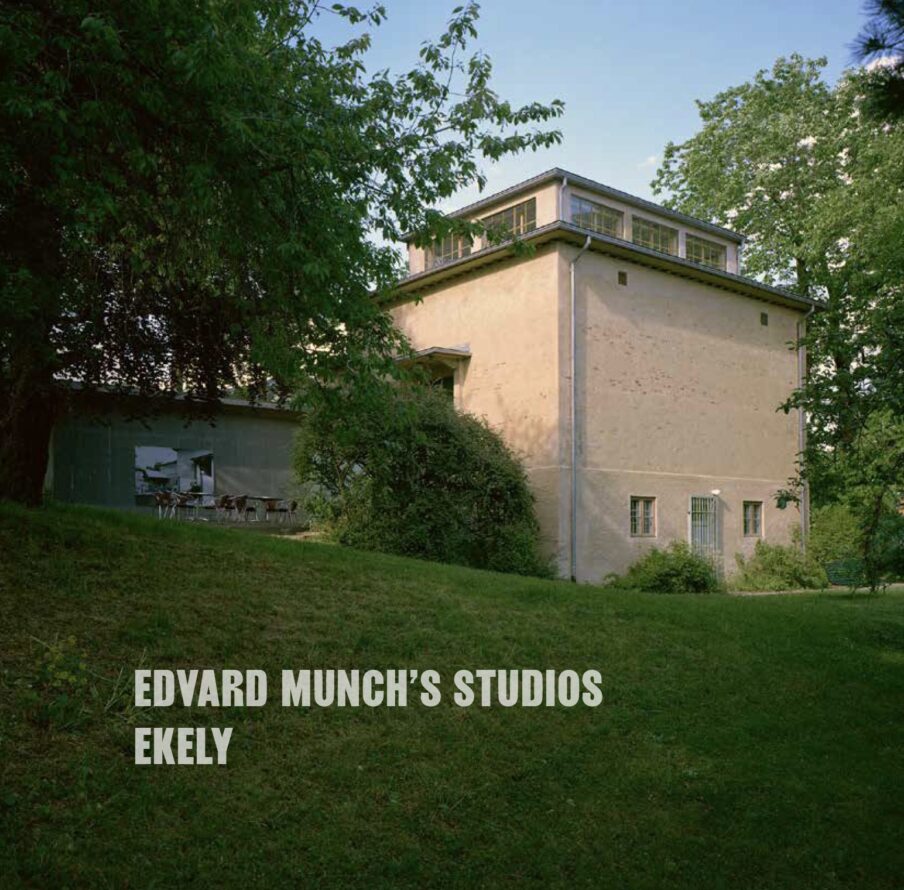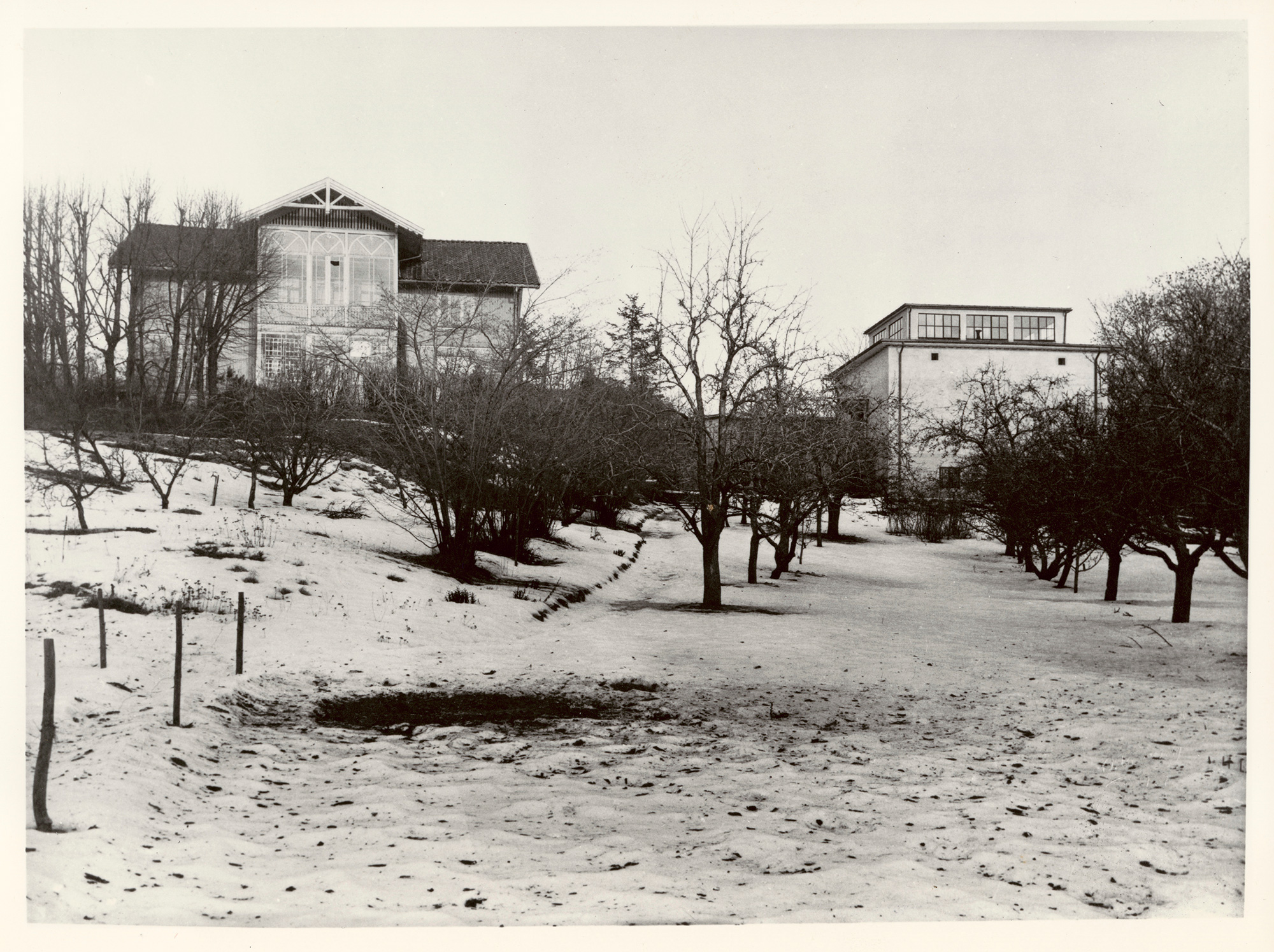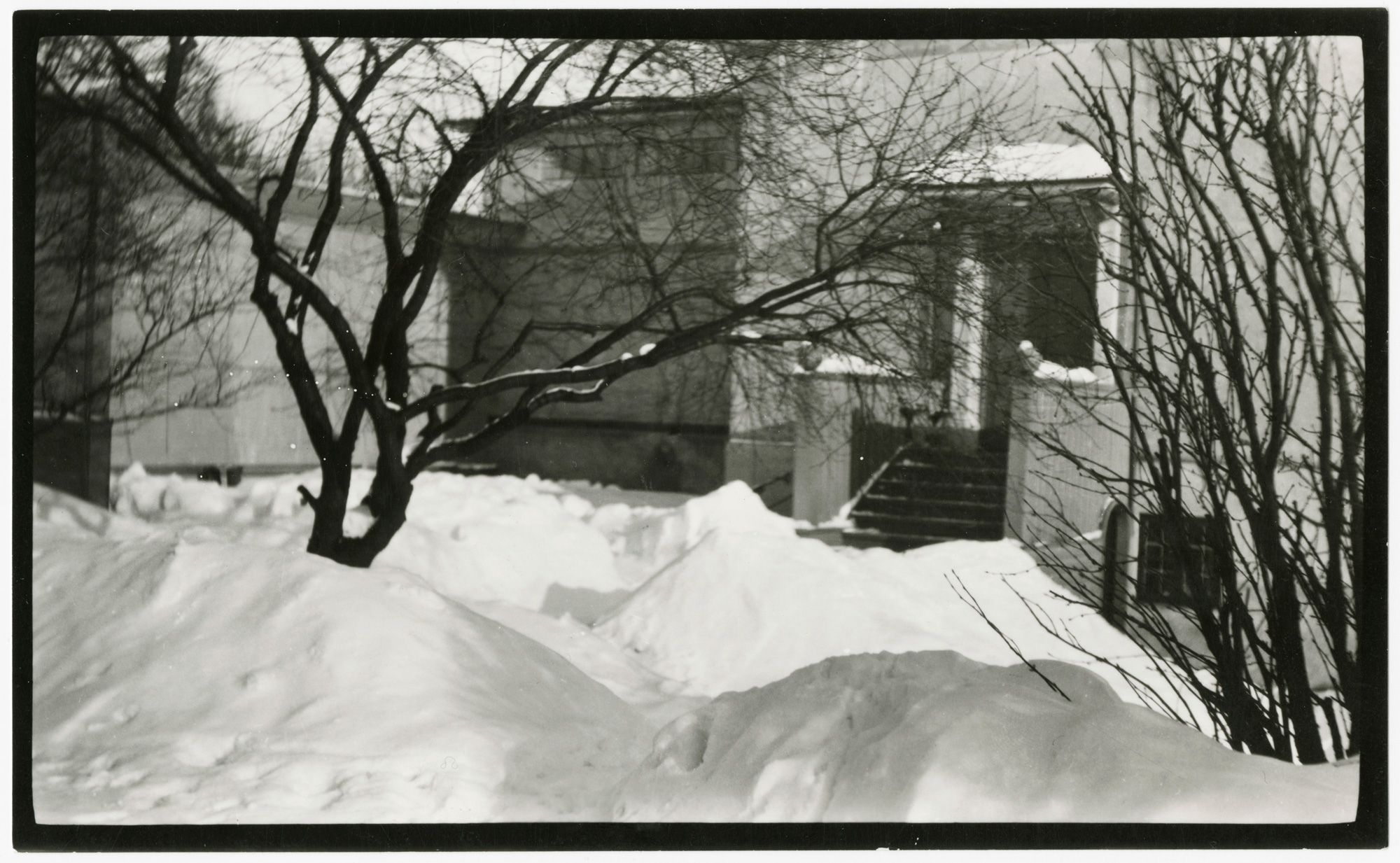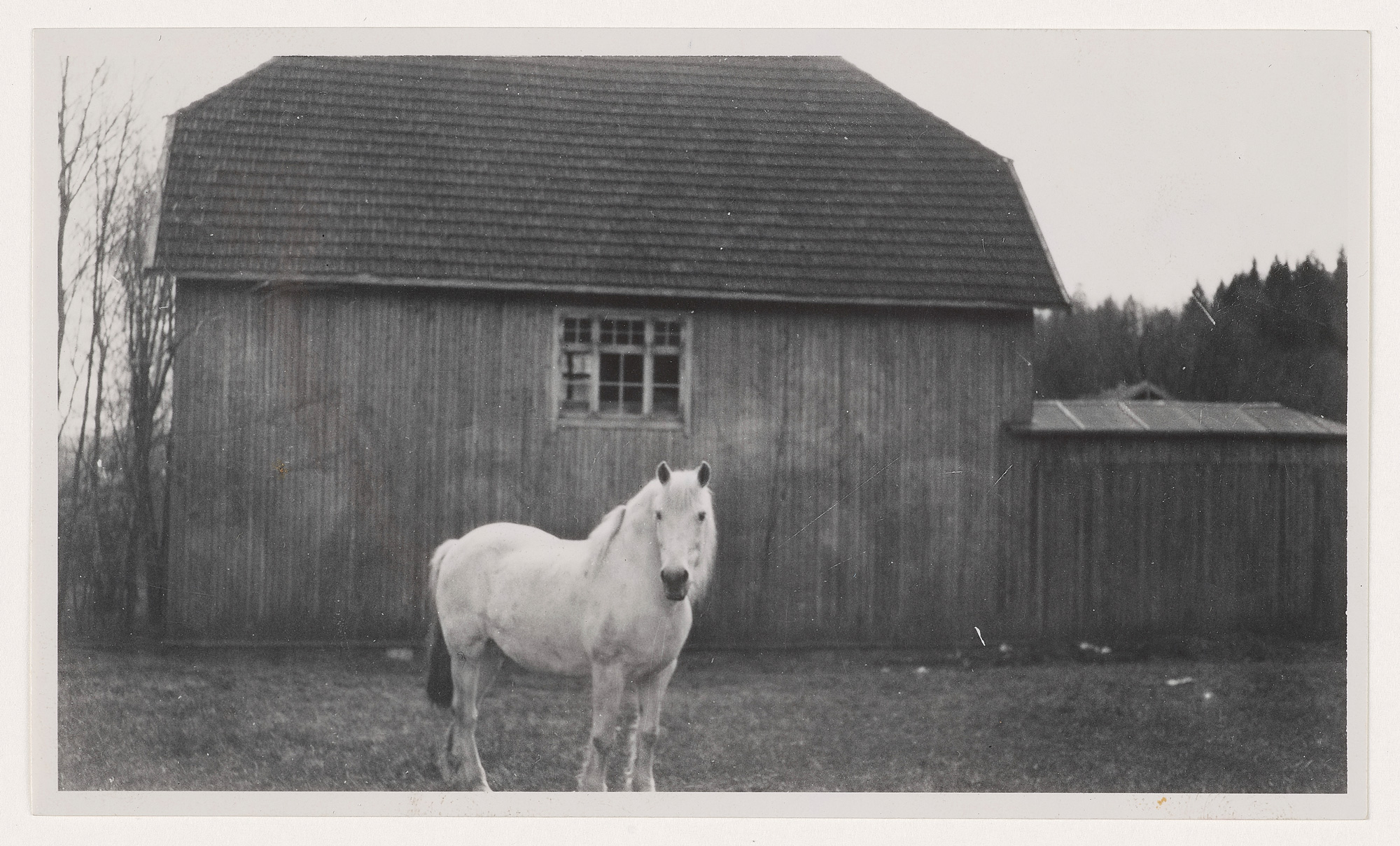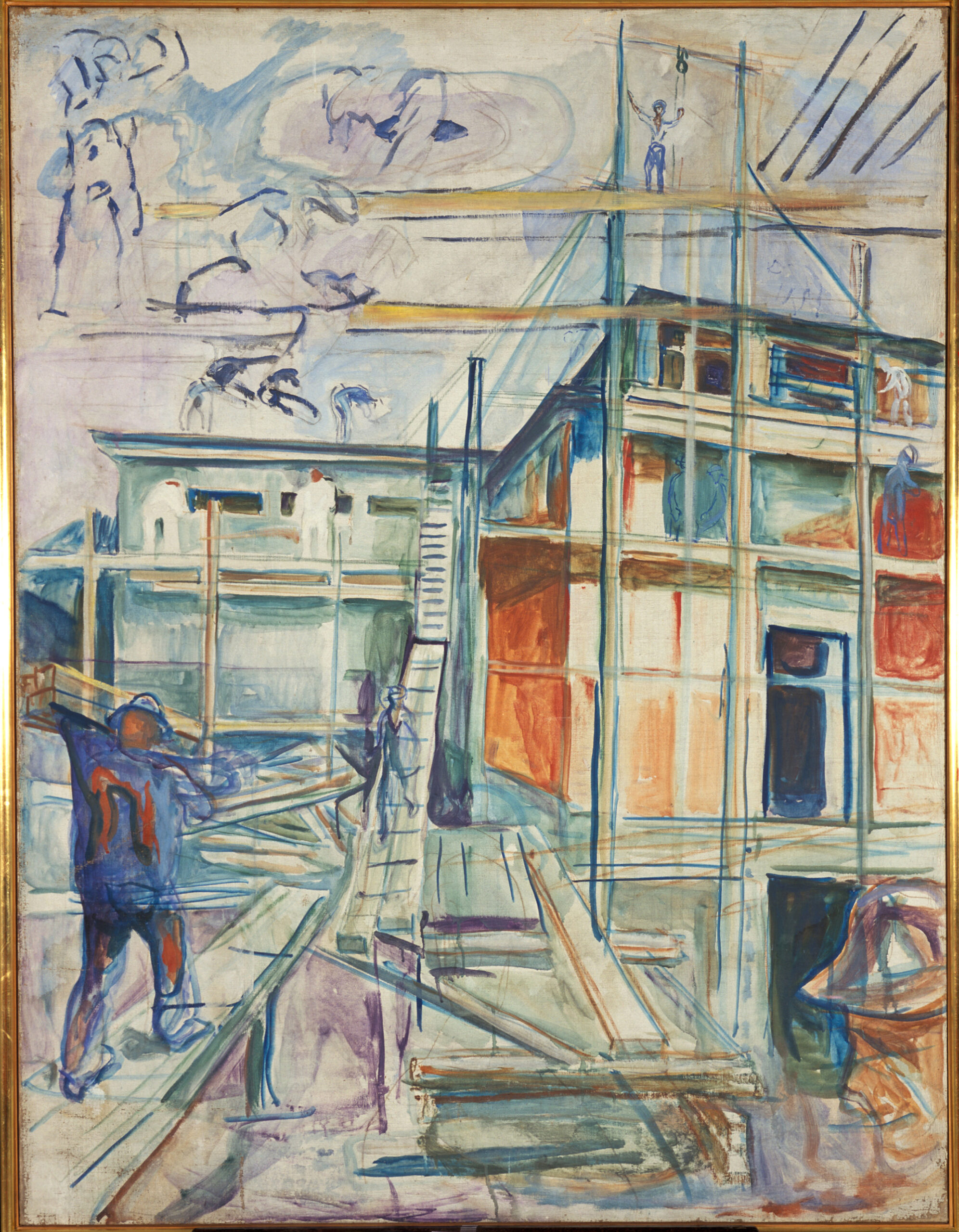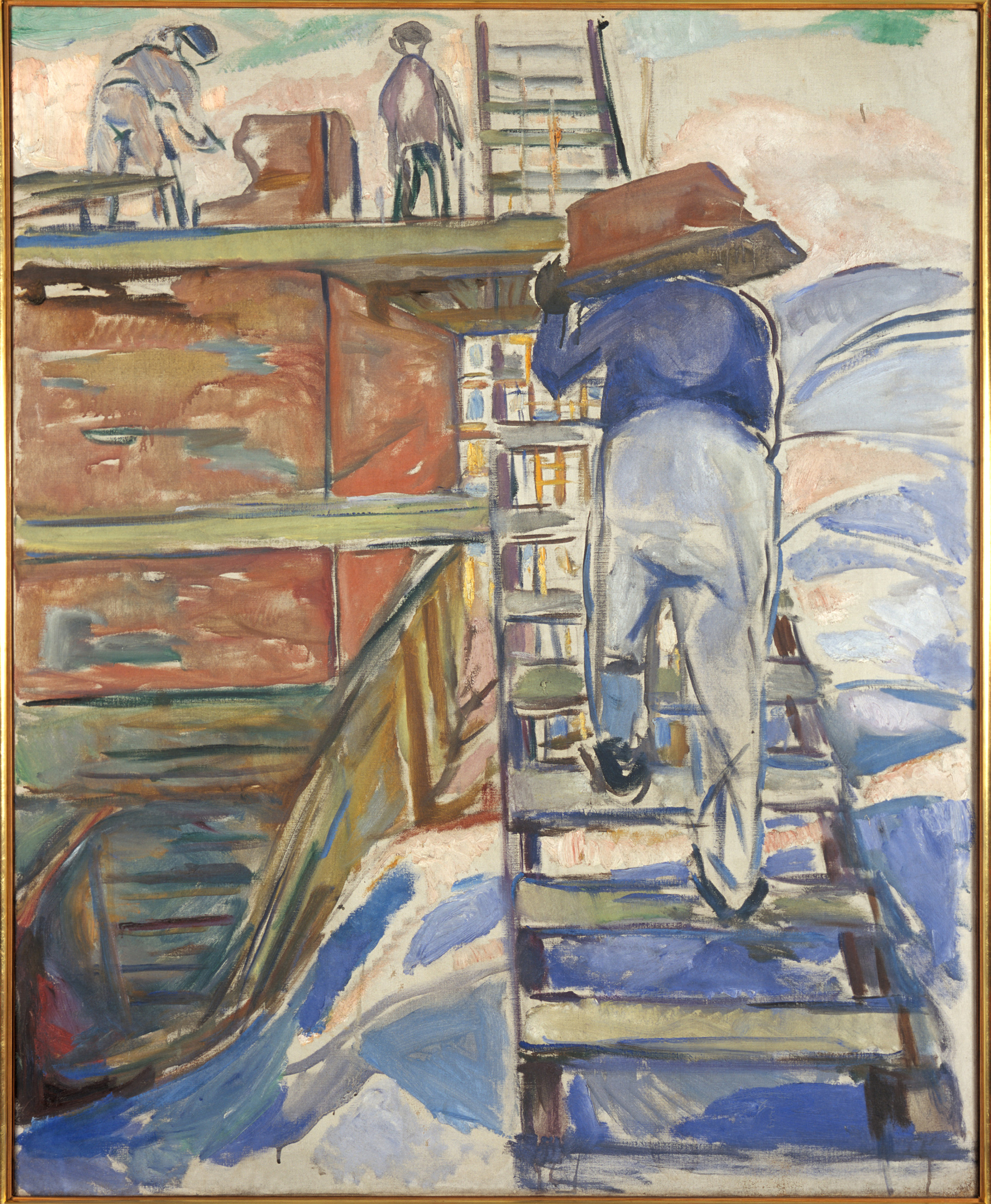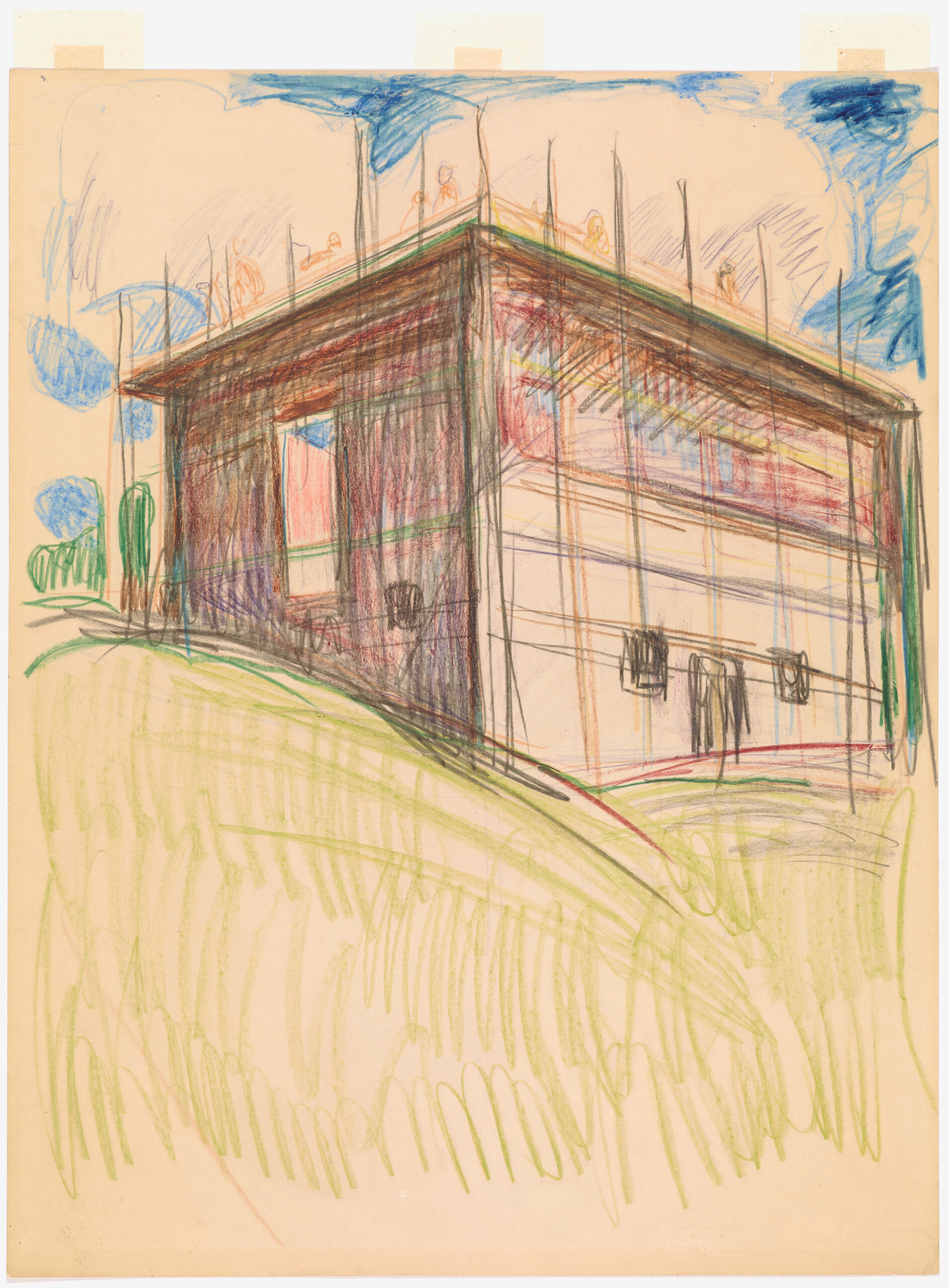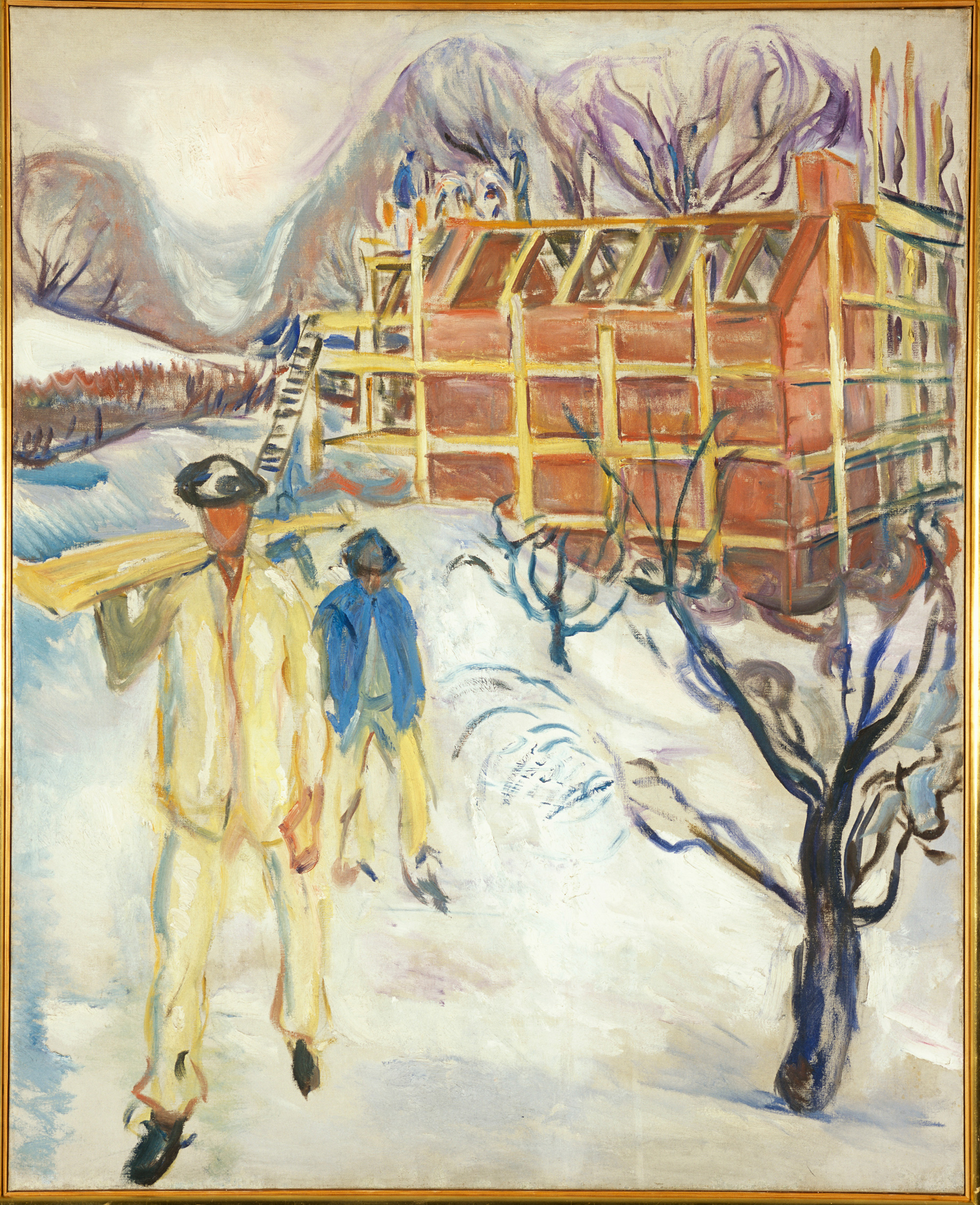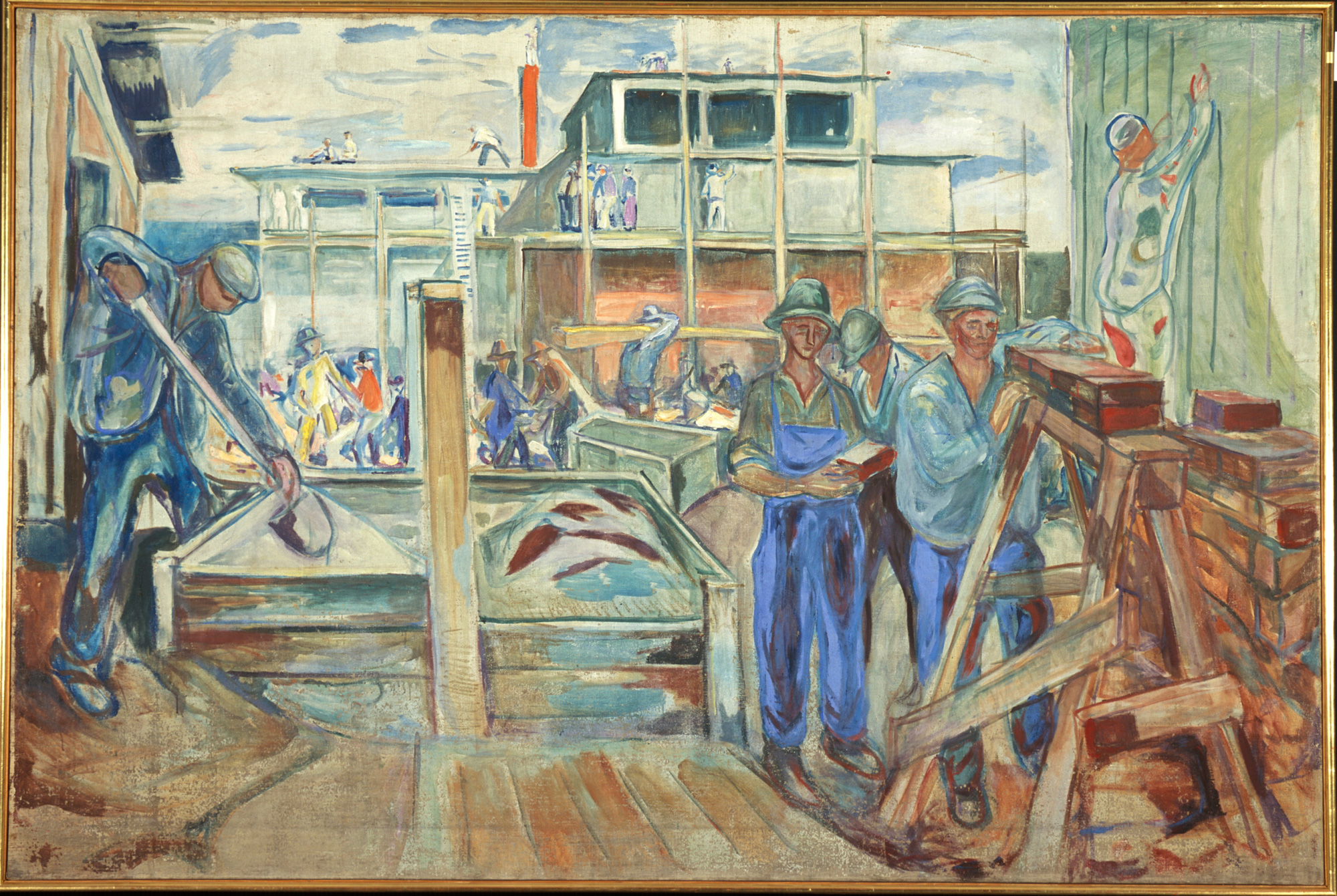In 1916, Edvard Munch bought the eleven-acre property Ekely at Skøyen on the outskirts of Oslo. The place became the painter’s permanent residence until his death there in 1944.
The eleven-acre plot encompassed a plant nursery, a greenhouse, a Swiss-style villa built in 1897, an extensive orchard, an arbour, and various outbuildings. In addition, Munch had several simple wooden structures built with adjacent open-air studios, referred to as the south and north studios.
To increase the available space, in 1920, he commissioned the architect Arnstein Arneberg to design a winter studio that he could use when it was too cold to paint outdoors. Ten years later, the studio was restructured and extended by Henrik Bull, one of the great architects of the time. The building was finished in 1929. The Winter Studio is the only studio facility at Ekely that has been preserved. Just beyond the studio stands the group of trees that formed Munch’s arbour, a theme that crops up in a number of paintings.
As it stands today, the studio building houses a large top-lit studio and a smaller north-facing studio. In the basement there is a printing workshop with two printing presses, a facility originally established by artists at Ekely in the 1960s.
Ekely after Munch
In 1946, Oslo city council bought the property from Munch’s heirs. In the 1950s, forty-nine artist residences were built on the site. The Swiss-style villa, Munch’s home for the last twenty-eight years of his life, was demolished on the orders of Oslo city council in 1960. Following his death, Munch’s artworks were catalogued and stored in the Winter Studio, before eventually being transferred to the purpose-built Munch Museum at Tøyen, which opened in 1963.
That same year, the artists at Ekely appointed a committee to find an arrangement that would allow them to use the Winter Studio. With the support of the then mayor of Oslo, Brynjulf Bull, they reached an agreement with Oslo city council that gave them full user rights. The City of Oslo would take care of external maintenance, while the Ekely artists would meet the costs of internal maintenance. The studio stood ready for use in early 1965.
In need of money to cover the studio’s operating costs, the artists organised an annual Spring Exhibition, in collaboration with Lions Club, Oslo-Ullern. With the revenue from these exhibitions and their rental payments, together with stints of voluntary work, the artists managed to run the studio for some twenty years.
In the end, however, the outstanding maintenance work simply became too great. In 1989, the Social Committee of Oslo Rotary Club initiated a comprehensive renovation of the studio. The building was in a state of serious disrepair.

